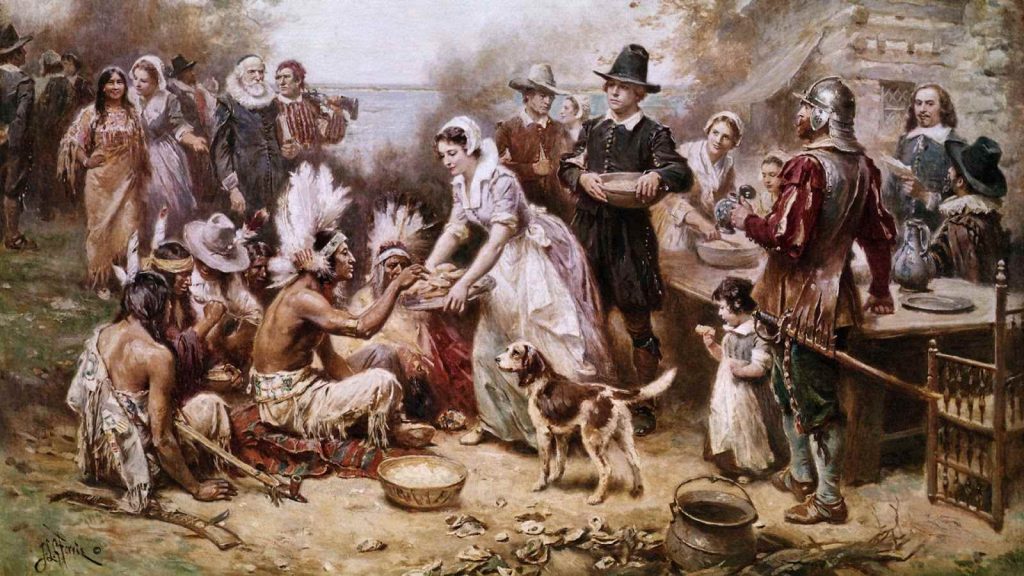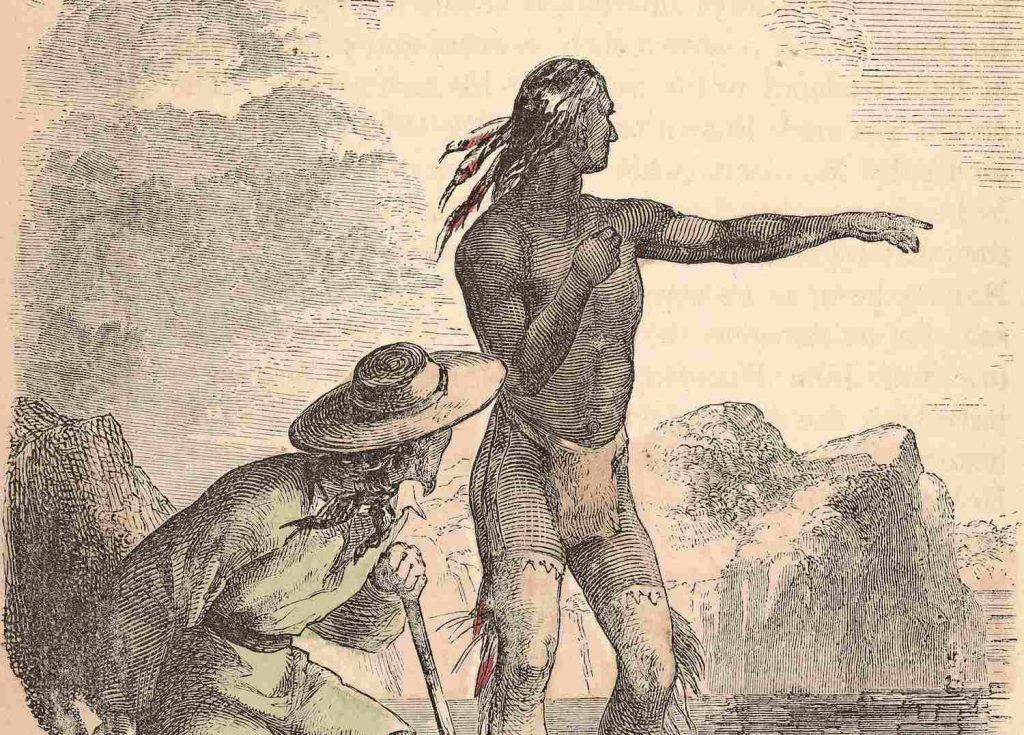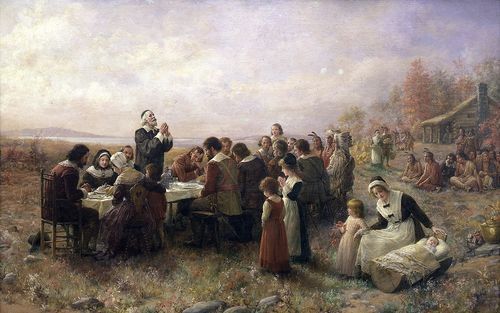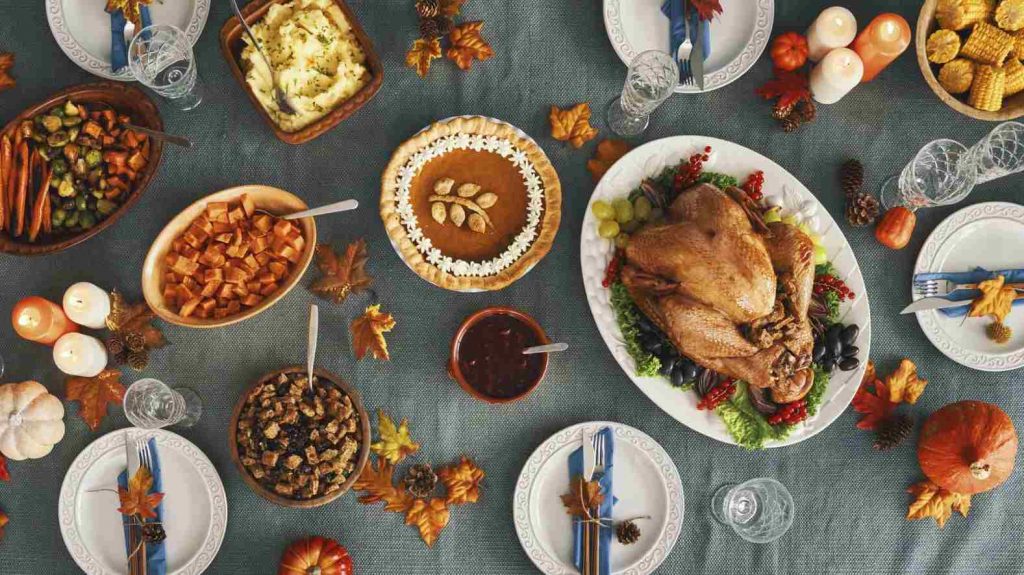Thanksgiving Day is approaching. This year, the day, celebrated every year on the fourth Thursday of November, falls on November 25. On this day, pageants are held on thanksgiving at schools, children don headdresses colored with craft-store feathers and share tables with classmates wearing black construction paper hats. Kids wish each other and love the feeling of togetherness!
Math & ELA | PreK To Grade 5
Kids see fun.
You see real learning outcomes.
Watch your kids fall in love with math & reading through our scientifically designed curriculum.
Parents, try for free Teachers, use for free
Do you know that there is an interesting history behind the Thanksgiving celebrations? Let us look into the history & dive into the Thanksgiving story.
The Real Thanksgiving Story Behind the Celebrations

At the beginning of the 17th century, a group of English Protestants, called Puritans (aka Pilgrims), wanted to break away from the Church of England. The group moved to Holland but suffered financial problems there.
In 1620, they received funds from English merchants and a group of 101 people, including women and children. These funds were left in a small ship called the Mayflower in September to settle at a different place near present-day New York City.
After a tiring journey of 66 days, the group dropped anchor near the tip of Cape Cod, far north of their intended destination, at the mouth of the Hudson River.
One month later, the Puritans sailed through Massachusetts Bay and began the work of setting up a village at Plymouth. However, the visitors spent their first winter on the ship. This thanksgiving story for kids is not just about a feast but about perseverance and unity.
Historians say that half of the settlers died of cold and a contagious disease on the ship. In March, the remaining settlers moved to the nearby coastal area, which was then inhabited by many Native American tribes. This part of the history of thanksgiving story for kids can be a bit sad, but it’s important to know.
One day, Samoset, a leader of the local Abenaki people, and Tisquantum (also known as Squanto) visited the settlers. Squanto, who belonged to the local Wampanoag community, knew English. Squanto taught the Puritans, weakened by malnutrition and illness, how to cultivate corn, extract sap from maple trees, catch fish in the rivers and avoid poisonous plants. His teachings are a crucial part of the thanksgiving for kids to understand, as it shows the importance of friendship and learning from one another.
After several meetings, in March 1621, a formal agreement was made between the native people and the settlers, also mentioned in the history books as colonists, for mutual cooperation. This agreement is a testament to the spirit of unity and cooperation, showing kids where did thanksgiving originate and how different communities can come together in harmony.
Watch this video to help your kids know all about the Thanksgiving story!
Related Reading: Amazing Thanksgiving Movies for Kids
Meet ‘Squanto’: The Native English Speaker

Squanto was a Native American from the Patuxet tribe. He had a very interesting life story. Before the Pilgrims came to America, Squanto was captured and taken to England. There, he learned to speak English. After some time, he returned to his homeland.
When the Pilgrims arrived, Squanto was one of the few Native Americans who could speak English. He helped the Pilgrims by teaching them how to grow food and survive in their new home. He played a big role in bringing the Native Americans and Pilgrims together for the first Thanksgiving.
Related Reading: Best Thanksgiving Songs for Kids
The First Thanksgiving Ever!

In November 1621, the story behind thanksgiving began to unfold. After their first successful corn harvest, Governor William Bradford of the colonists decided it was time to celebrate. He organized a feast, and to prepare, four settlers were sent on a hunting expedition. The gunshots from their hunt caught the attention of the nearby Wampanoag people. Thinking it might signal conflict, their leader, Massasoit, gathered around 90 men and headed to the English settlement.
Related Reading: Fun Thanksgiving Activities for Kids to Keep Them Busy!
After reaching there, Massasoit discovered that the English were only hunting for the harvest celebration. This was a pivotal moment that defined the meaning behind thanksgiving. The Native Americans then joined the settlers in their celebrations. Massasoit also sent some of his own men for hunting.
A grand feast was organized, in which the English and native men, women, and children ate together. This event marked the official thanksgiving start. The meal consisted of deer, corn, shellfish, and roasted meat. There were no sweet dishes as the Mayflower’s sugar supply had finished by then. The celebrations went on for three days. People of the two communities also sang and danced together.
Declaration of Thanksgiving Day as a National Holiday
- After the November 1621 celebratory feast at Plymouth, the Puritans held their second Thanksgiving celebration in 1623, following a year of drought.
- During the American Revolution (1765-1791), the Continental Congress called for one or more days of thanksgiving a year.
- In 1789, George Washington issued the first Thanksgiving proclamation by the US national government. He also called upon Americans to express their gratitude for the happy ending of the country’s independence war.
- His successors, John Adams and James Madison, also followed the trend.
- In 1817, New York became the first of several US states to officially adopt an annual Thanksgiving holiday.
- In 1827, the famous journalist Sarah Josepha Hale launched a campaign to establish Thanksgiving as a national holiday. For 36 years, she published numerous editorials and sent scores of letters to government representatives.
- Finally, at the height of the Civil War in 1863, Abraham Lincoln scheduled Thanksgiving Day for the final Thursday in November.
- In 1939, Franklin D. Roosevelt moved the holiday up a week during the Great Depression. However, Roosevelt’s plan faced strong opposition, and two years later, he had to reluctantly shift the day to the fourth Thursday in November.
Current Traditions and Rituals of Thanksgiving Day

In many American households, the Thanksgiving celebration has lost much of its original religious significance. It now revolves around cooking and sharing food with family and friends.
According to the National Turkey Federation, about 90 percent of Americans eat turkey on Thanksgiving Day. Other traditional foods include stuffing, mashed potatoes, cranberry sauce, and pumpkin pie. Volunteering is a common activity on this day and communities often offer free dinners for the poor. Parades are taken out in cities and towns across the United States.
Related Reading: Best Thanksgiving Songs for Kids
4 Tips to Learn About Native American Heritage
Native American history is rich and full of amazing stories. If you want to learn more:
- Books: There are many children’s books that tell the stories of Native American tribes, their heroes, and their traditions. Ask your teacher or librarian for recommendations.
- Museums: Some museums have special sections dedicated to Native American history. You can see real artifacts and learn about how they lived long ago.
- Talk to People: If you know someone who is Native American, ask them about their traditions and stories. They might have some wonderful tales to share.
- Online: With the help of an adult, you can find websites and videos that teach about Native American history in a fun and interactive way.
Related Reading: Best Kid-Friendly Thanksgiving Trivia Questions & Answers
A Welcome Holiday
Irrespective of the controversy surrounding the day, there is no doubt that it is many people’s favorite holiday. From the amazing turkey dinner to the cozy gathering of family and friends, the day provides the fun of Christmas, minus the stress of decorating and gift-giving. It provides us an opportunity for a stress-free holiday focused on food and fun.
Many people like the day for its welcoming spirit and sense of community. Thanksgiving is a holiday that welcomes all, regardless of religious beliefs or cultural traditions. It also provides time to reflect on our lives, appreciate what we have, who we are, and where we are right now.
SplashLearn wishes you a Happy Thanksgiving!
Frequently Asked Questions (FAQs)
Related Reading: Best & Important Character Traits for Kids That All Parents Must Instill
How did Thanksgiving get its name?
In November 1621, the Plymouth colonists and Wampanoag Native Americans shared an autumn harvest feast. The feast was organized by the colonists to thank the native people for their cooperation. Hence, it is acknowledged as Thanksgiving day today.
Why did the date of Thanksgiving change every year?
In 1939, the last year of the Great Depression, the last Thursday of November was on the last day of the month. US President Franklin D Roosevelt became concerned that the shortened Christmas shopping season might dampen economic recovery. He, therefore, moved Thanksgiving to the second to last Thursday of November. Some 32 states consequently issued similar proclamations, but 16 states refused to accept the change. As a result, for two years two days were celebrated as Thanksgiving. To end the confusion, on October 6, 1941, Congress set last Thursday in November as a fixed date for the holiday.
Does Colombia celebrate Thanksgiving?
No, Colombia does not traditionally celebrate Thanksgiving. Thanksgiving is primarily a North American holiday, celebrated mainly in the United States and Canada.
What are some interesting Thanksgiving facts?
Here are a few fun facts about Thanksgiving:
- The first Thanksgiving was celebrated in 1621 and lasted for three days.
- President Abraham Lincoln declared Thanksgiving a national holiday in 1863.
- The Macy’s Thanksgiving Day Parade began in 1924 and has since become a significant event associated with the holiday.
Is there a Thanksgiving short story suitable for kids?
Yes! A delightful Thanksgiving short story for kids is “Thanksgiving at the Tappletons'” by Eileen Spinelli. The story revolves around the Tappleton family and the series of mishaps that occur as they prepare for their Thanksgiving feast. From the turkey to the dessert, nothing goes as planned! But in the end, the family realizes that it’s not the food but the company that truly matters. With its humorous twists and heartwarming conclusion, it’s a perfect read for children to understand the real essence of Thanksgiving.























